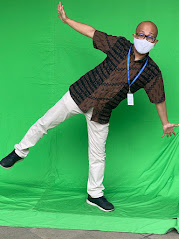Over the past 4 months I have been learning to work with wood. After moving to Australia, I quickly got a job teaching at OneSchool Global in Brisbane. I am now teaching Design Technology from Yr 3-11. It's a different experience to teaching overseas.
After settling in during my first weeks, I soon realized that I needed to up skill myself in woodworking. The school has a wood working room, full of equipment that I hadn't used before. I did try completing a safety program online, but I soon realized that I needed to attend some classes in person to learn about how to construct with wood. In my previous school in Jakarta, I ran a Maker Space. The room had a lot of specialized equipment, but only hand tools for working with wood. I had access to a wonderful laser cutter - a Glowforge, but I still had too little experience in working with wood beyond plywood boards.
In my second term of teaching, I was really excited to teach a unit all about up-cycling. This involved taking something old and renovating it to increase its value. I chose to work on a project of my own at school to gain a better understanding of the time, skills and equipment required. I had observed that my students really like PBL - Project Based Learning and having some choice around what to make. I started with a chair and brought it into school to use a provocation.
The chair did spark a little conversation but my students were not very interested in it.
How could I get their interest?
How could I show that I am a learner too?
How could I inspire students to develop the Maker's mindset?
My shipping had just arrived from Jakarta and with it was my 30 year old guitar. It was the perfect choice! My students are very musical and there are a lot of small music bands in the school. I chose to up-cycle this old Yamaha and along the way demonstrate the Design cycle and share my process as a learner.
How could up-cycling a guitar teach me about working with wood? Through my research, I soon realized that I would have to remove the strings and tuners and completely sand back the whole guitar (except for the fretboard). I learned that I needed to understand about finishing the wood after painting on the waterlily so that it could be played as a guitar.
Not only did I get to learn about guitars, but I also learned about my students and their skills.
Along the way I would ask:
'What should I do next?'
'How will I know what's right?'
'Where can I get help with this?'
This is just the beginning. Through my research into guitar making, I found a Luthier (guitar maker) in Brisbane. Long story short, I went to visit that workshop on a weekend and decided to learn to make a guitar myself from wood. But, that's a whole other story and needs a post or two on it's own.




























